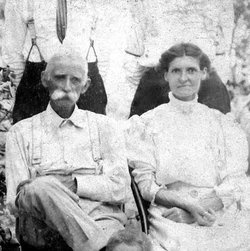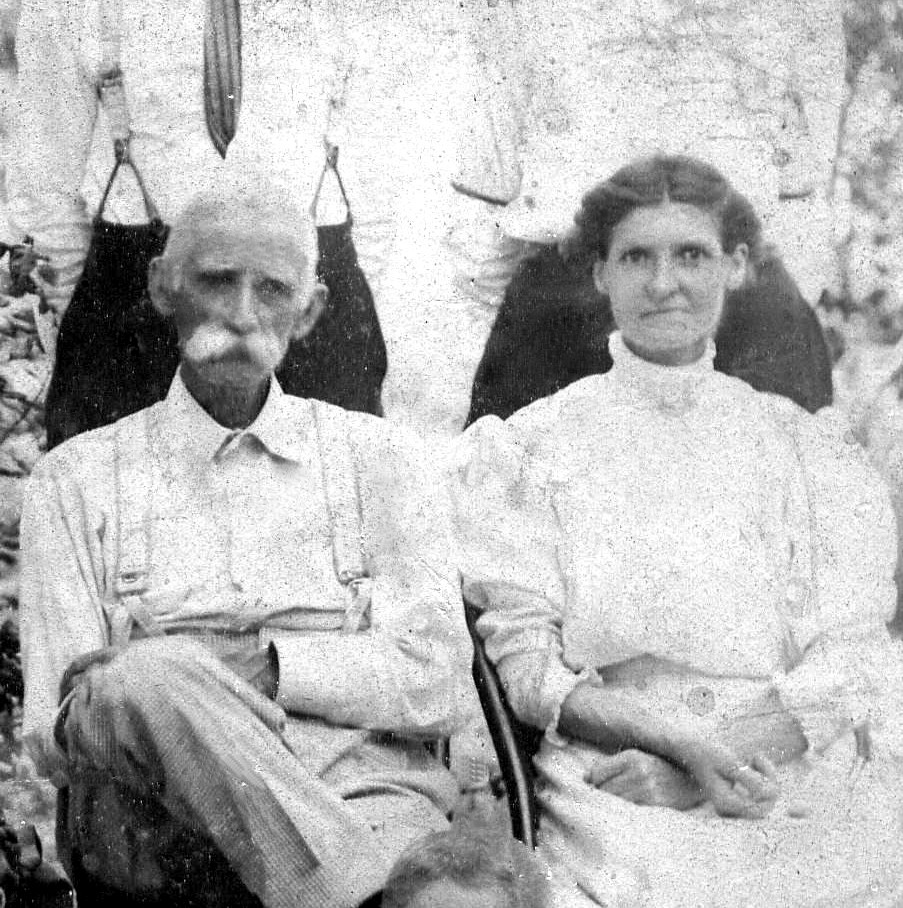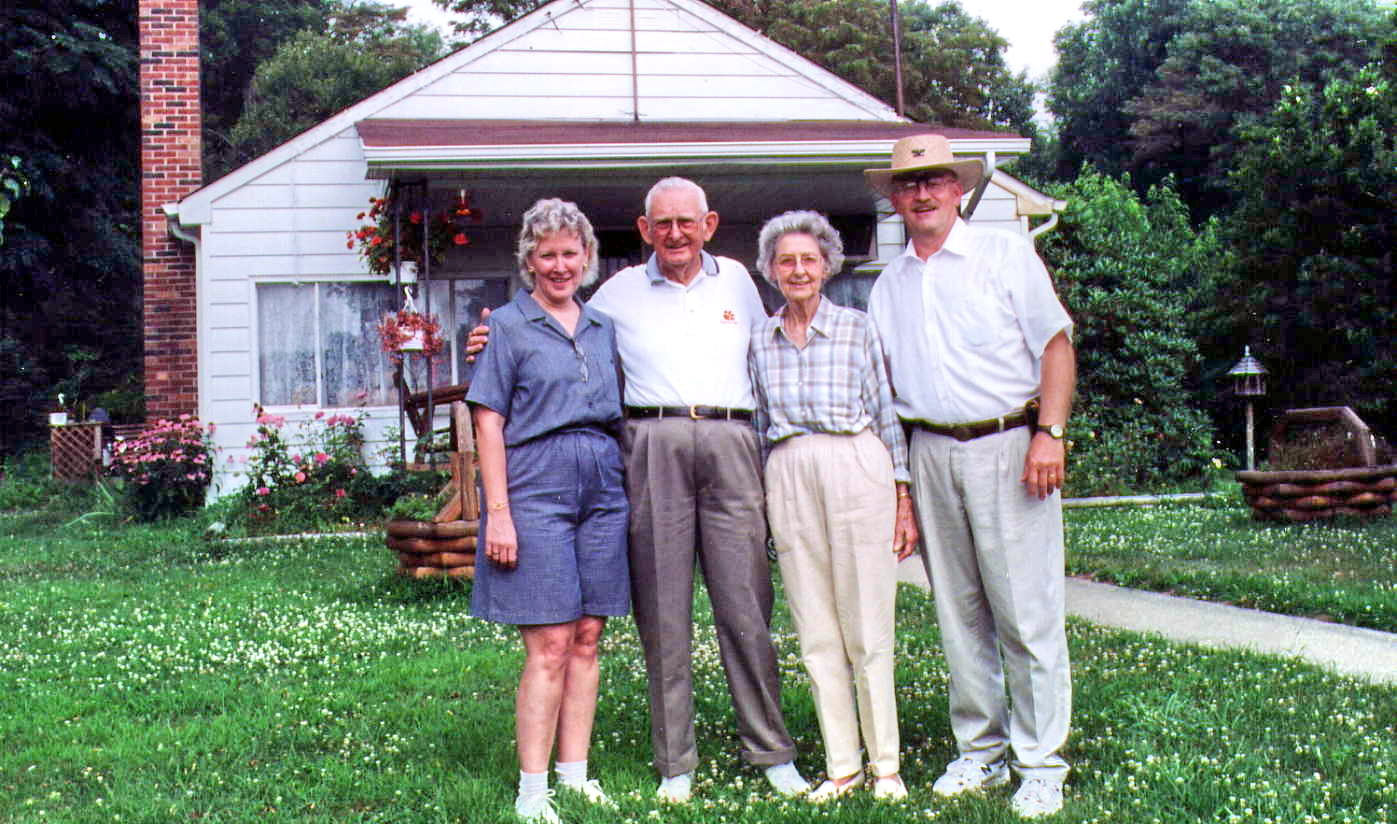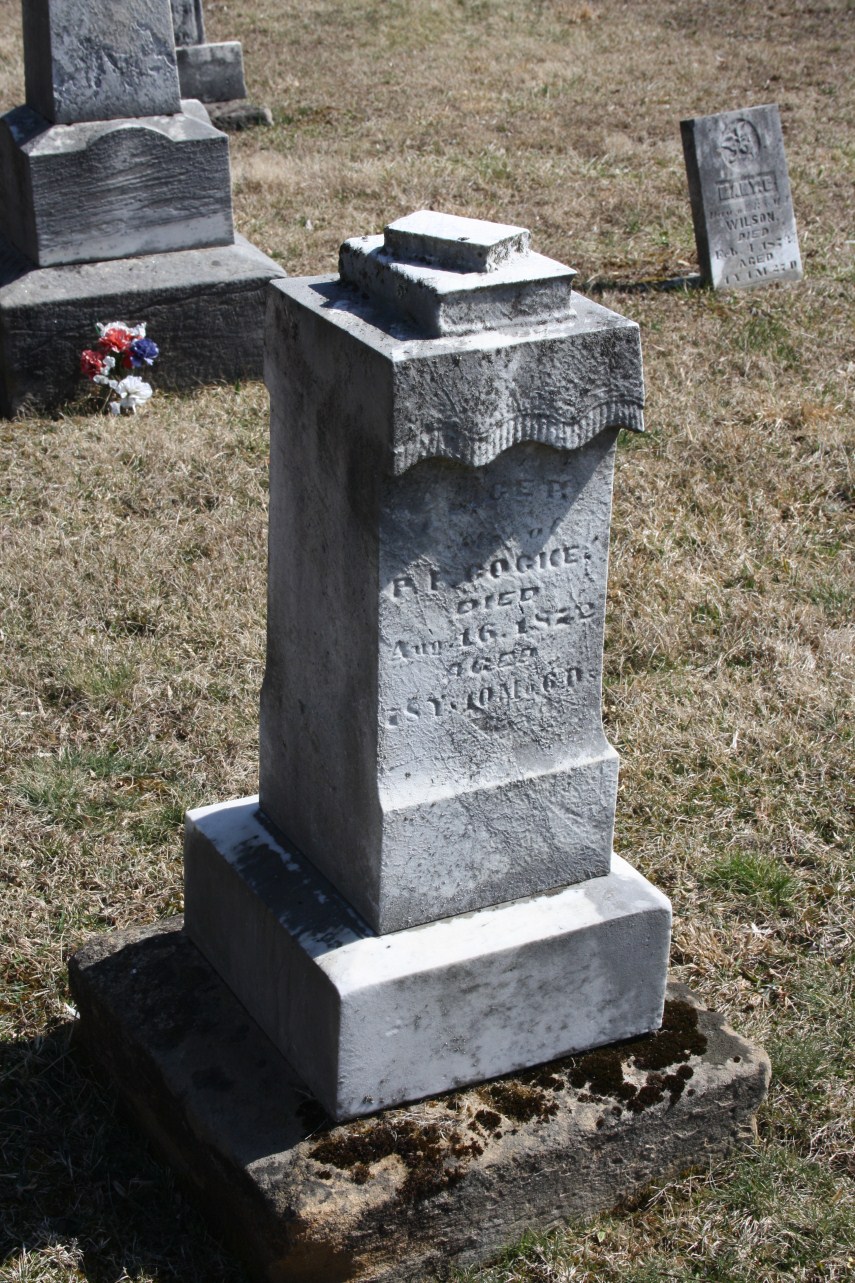From the book Your Inheritance, "Sir Robert Hoo had a grant in Luton, November 1310. He married Hawise and had a son, Sir Thomas de Hoo, as appears by a grant dated January 1328 to Dame Hawise de Hoo and Thomas de Hoo, her son. Sir Thomas died September, 1380 and buried St. Albans married Isabel de St. Leger died July, 1393 and buried St. Albans had four sons: Thomas, William, Robert, and John. Thomas died before William who succeeded Sir Thomas. William married Alice de St. Omer granddaughter of Sir Nicholas Malmayns of Ockley, Surrey. Sir William Hoo was Captain of the castle of Oye and of Hames. He had license 1 October, 1386 to make a pilgrimage to the Holy Land and was employed on several diplomatic missions. William, Knight died 1410 and was buried at Mulbarton, York."
Robbie Ross writes in her book, Your Inheritance, "Sir Robert Hoo, Knight, died November 1311, buried at Cowes upon Humber, Married Hawise Fitz Warin, died September 28, 1344, buried at Grey Friars at Dunstable. Hawise was a descendant of Surety Sir William Malet who signed the Charta and Thomas Basset, named in the Charta. Hawise was the great granddaughter of Sibyl Marshall, third daughter of William Marshall, Earl of Pembroke, also named in the Charta.
Joseph and Frances Gies write in their book, Life in a Medieval Castle, "William Marshall, the most admired knight of his day, married Isabel de Clare, heiress of immense holdings in western England, Wales, Ireland and the castles Chepstow and Pembroke. As a member of the Royal Council, William served Richard and John for many years and played a leading, perhaps the leading, role in negotiating the Magna Charta. On John's death he efficiently put down the rebel barons supporting Prince Louis of France and during a reluctant but statesmanlike term as regent established the boy, Henry III, securely on the throne."
In the prologue, the Gies state: "Because Chepstow illustrates many of the features of castle arquitecture and living arrangements, and because its lords were among the foremost barons of their time, the story will center around Chepstow..."
There are pictures and many interesting accounts of both Chepstow Castle and Pembroke Castle in the book. Chepstow is north of the new Severn Suspension Bridge, on the Welsh border of the River Wye near Bristol, England. The oldest part of Chepstow was built in the eleventh century. Pembroke is on the southwest tip of Wales and was built in 1093. It was an important base from which the Normans conquered south Wales.
William Marshall's daughter, Maud (married Hugh Bigod) inherited the castles in 1245. On Maud's death in 1248, the new lord of Chepstow was her oldest son, Roger Bigod, who also had the title of earl of Norfolk, and who now acquired the unique one of "earl marshall of England," an honor won by William Marshall and now officially made hereditary.
Sir Thomas Hoo fought in the Battle of Agincourt in France in 1415, a battle helping to cause the decline of the feudal warfare. With their longs bows 13,000 Englishmen killed or routed some 50,000 Frenchmen. Henry V was determined to regain all territories in France lost earlier in the Hundred Years War.
Sir Thomas Hoo was the last Lord of the Manor of Hoo. He was created a baron by the title of Lord of Hoo and Hastings in the reign of Henry VI and made a Knight of the Garter. Lord Hastings left his brother, Sir Thomas Hoo, an annuity of twenty pounds and bequeathed 1000 marks for the marriages of his daughters Anne, Eleanor, and Elizabeth. Anne became the great grandmother of Anne Boleyn, second Queen Consort of Henry VIII, and mother of Elizabeth I, Queen of England. Thomas was nominated Knight of the Garter 11 July. His brother was the ancestor of the Hooe family in America.
Elizabeth de Echingham, wife of Sir Thomas Hoo, was the great, great, granddaughter of King Henry III and was a descendant of Surities Sir William Malet, Saher de Quincy, Robert de Vere, Roger and Hugh Bigod who signed the Magna Carta; and also of Thomas Bassett, William D'Aubigny, and William de Warenne, the sixth earl of Surrey, who were mentioned in the preamble to the Magna Charta. De Warenne was a descendant of Charlemagne. Descendants of Alice Reeding Hooe and Peter Presley Cocke are "kinfolks" to Elizabeth and her ancestors including Henry VIII's second wife, Ann Boleyn, and Queen Elizabeth I, therefore to modern day Queen Elizabeth II and her family.
Col. Rice Hooe III was in 1702-3 a Burgess and in 1700 a Justice of Stafford Co. In 1700 he was a vestryman at St. Paul's Church when the family moved there from Barsnfield. In 1704 he was granted 200 acres in Stafford Co. By 1713 he operated one of the first ferries to cross the Potomac "from Col. Rice Hooe's to Cedar Point, Maryland." "Barnsfield" was burned by federal troops in the Civil War because a later Hooe raised a confederate flag every morning against orders. Satfford was the northern part of today's King George Co., VA.
From the book Your Inheritance, "Sir Robert Hoo had a grant in Luton, November 1310. He married Hawise and had a son, Sir Thomas de Hoo, as appears by a grant dated January 1328 to Dame Hawise de Hoo and Thomas de Hoo, her son. Sir Thomas died September, 1380 and buried St. Albans married Isabel de St. Leger died July, 1393 and buried St. Albans had four sons: Thomas, William, Robert, and John. Thomas died before William who succeeded Sir Thomas. William married Alice de St. Omer granddaughter of Sir Nicholas Malmayns of Ockley, Surrey. Sir William Hoo was Captain of the castle of Oye and of Hames. He had license 1 October, 1386 to make a pilgrimage to the Holy Land and was employed on several diplomatic missions. William, Knight died 1410 and was buried at Mulbarton, York."
Robbie Ross writes in her book, Your Inheritance, "Sir Robert Hoo, Knight, died November 1311, buried at Cowes upon Humber, Married Hawise Fitz Warin, died September 28, 1344, buried at Grey Friars at Dunstable. Hawise was a descendant of Surety Sir William Malet who signed the Charta and Thomas Basset, named in the Charta. Hawise was the great granddaughter of Sibyl Marshall, third daughter of William Marshall, Earl of Pembroke, also named in the Charta.
Joseph and Frances Gies write in their book, Life in a Medieval Castle, "William Marshall, the most admired knight of his day, married Isabel de Clare, heiress of immense holdings in western England, Wales, Ireland and the castles Chepstow and Pembroke. As a member of the Royal Council, William served Richard and John for many years and played a leading, perhaps the leading, role in negotiating the Magna Charta. On John's death he efficiently put down the rebel barons supporting Prince Louis of France and during a reluctant but statesmanlike term as regent established the boy, Henry III, securely on the throne."
In the prologue, the Gies state: "Because Chepstow illustrates many of the features of castle arquitecture and living arrangements, and because its lords were among the foremost barons of their time, the story will center around Chepstow..."
There are pictures and many interesting accounts of both Chepstow Castle and Pembroke Castle in the book. Chepstow is north of the new Severn Suspension Bridge, on the Welsh border of the River Wye near Bristol, England. The oldest part of Chepstow was built in the eleventh century. Pembroke is on the southwest tip of Wales and was built in 1093. It was an important base from which the Normans conquered south Wales.
William Marshall's daughter, Maud (married Hugh Bigod) inherited the castles in 1245. On Maud's death in 1248, the new lord of Chepstow was her oldest son, Roger Bigod, who also had the title of earl of Norfolk, and who now acquired the unique one of "earl marshall of England," an honor won by William Marshall and now officially made hereditary.
Sir Thomas Hoo fought in the Battle of Agincourt in France in 1415, a battle helping to cause the decline of the feudal warfare. With their longs bows 13,000 Englishmen killed or routed some 50,000 Frenchmen. Henry V was determined to regain all territories in France lost earlier in the Hundred Years War.
Sir Thomas Hoo was the last Lord of the Manor of Hoo. He was created a baron by the title of Lord of Hoo and Hastings in the reign of Henry VI and made a Knight of the Garter. Lord Hastings left his brother, Sir Thomas Hoo, an annuity of twenty pounds and bequeathed 1000 marks for the marriages of his daughters Anne, Eleanor, and Elizabeth. Anne became the great grandmother of Anne Boleyn, second Queen Consort of Henry VIII, and mother of Elizabeth I, Queen of England. Thomas was nominated Knight of the Garter 11 July. His brother was the ancestor of the Hooe family in America.
Elizabeth de Echingham, wife of Sir Thomas Hoo, was the great, great, granddaughter of King Henry III and was a descendant of Surities Sir William Malet, Saher de Quincy, Robert de Vere, Roger and Hugh Bigod who signed the Magna Carta; and also of Thomas Bassett, William D'Aubigny, and William de Warenne, the sixth earl of Surrey, who were mentioned in the preamble to the Magna Charta. De Warenne was a descendant of Charlemagne. Descendants of Alice Reeding Hooe and Peter Presley Cocke are "kinfolks" to Elizabeth and her ancestors including Henry VIII's second wife, Ann Boleyn, and Queen Elizabeth I, therefore to modern day Queen Elizabeth II and her family.
Col. Rice Hooe III was in 1702-3 a Burgess and in 1700 a Justice of Stafford Co. In 1700 he was a vestryman at St. Paul's Church when the family moved there from Barsnfield. In 1704 he was granted 200 acres in Stafford Co. By 1713 he operated one of the first ferries to cross the Potomac "from Col. Rice Hooe's to Cedar Point, Maryland." "Barnsfield" was burned by federal troops in the Civil War because a later Hooe raised a confederate flag every morning against orders. Satfford was the northern part of today's King George Co., VA.
Inscription
78y 10m 6d Wife of P. Cocke
Family Members
Advertisement
Records on Ancestry
Sponsored by Ancestry
Advertisement
















